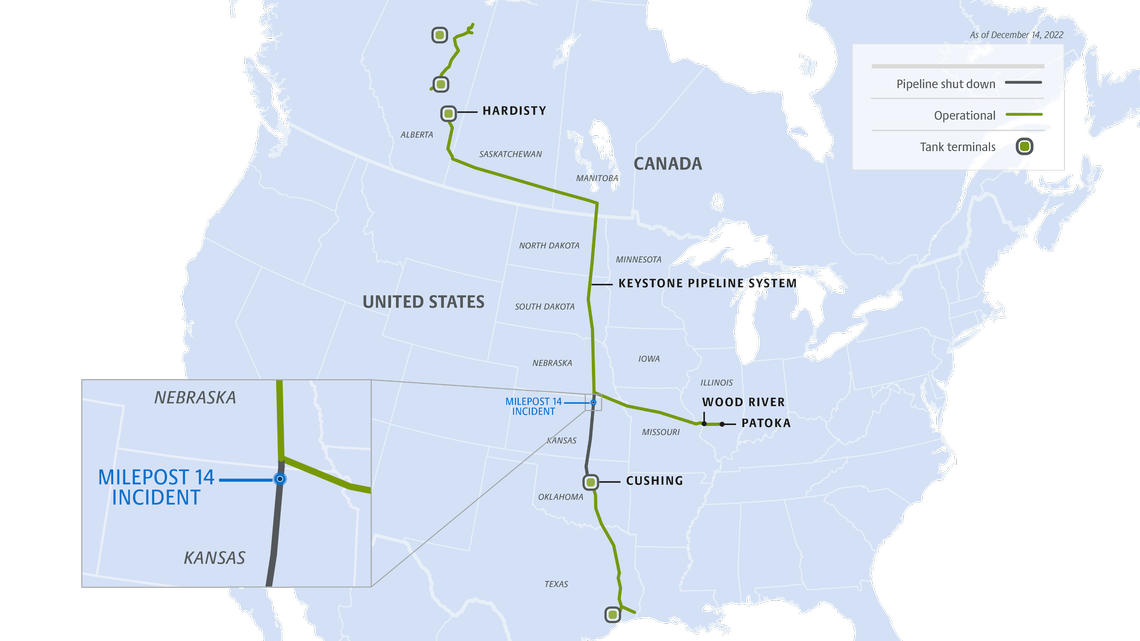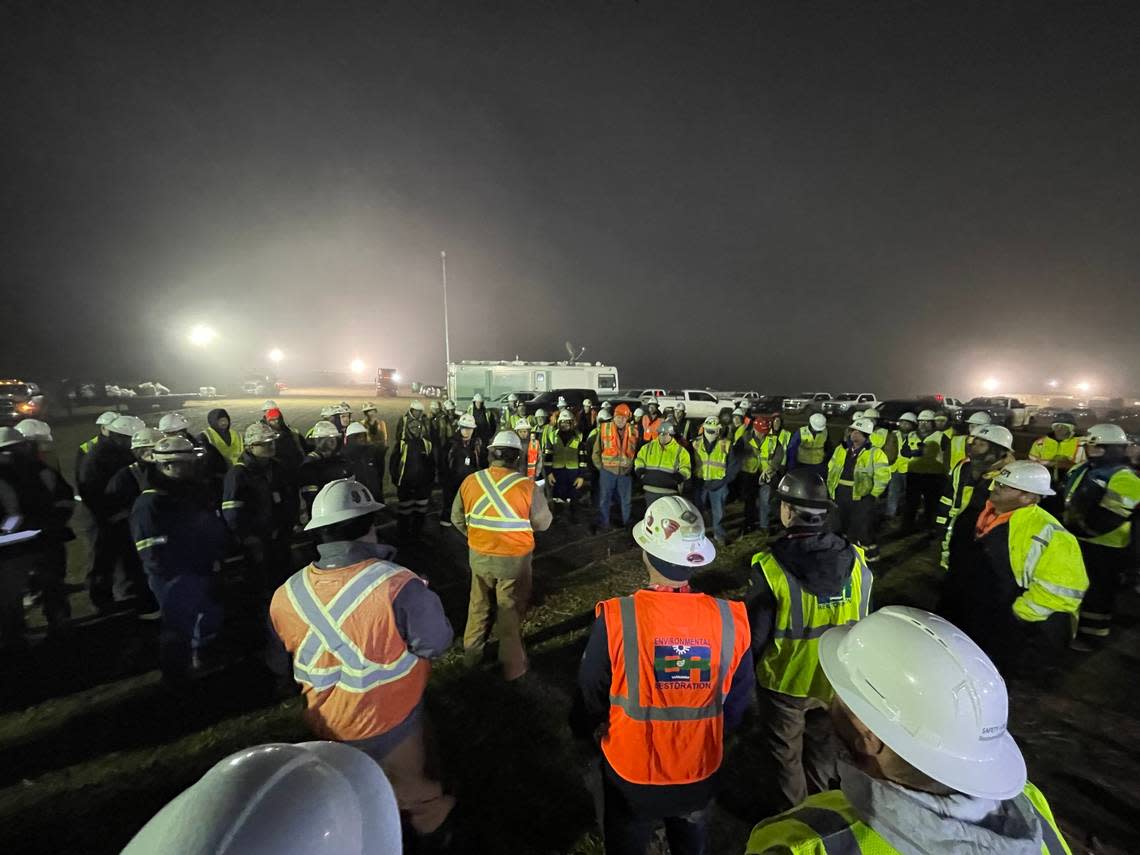Feds reviewing special permit process for pipelines as Kansas oil spill cleanup proceeds
As Kansas continues to clean up from the Keystone pipeline oil spill, the U.S. agency that regulates pipelines is reviewing its process for granting special permits that allow pipelines, including Keystone, to operate at pressures above the standard for crude oil transport.
The U.S. Pipeline and Hazardous Materials Safety Administration has commissioned an independent study of the process from Oak Ridge National Laboratory in Tennessee. A 2021 audit of Keystone pipeline accidents by the Government Accountability Office, or GAO, found that the severity of Keystone’s spills has worsened in recent years.
About 558,000 gallons of oil — enough to fill around 43½ standard swimming pools — spilled in a rural area near Washington, Kansas, on Dec. 7. The spill is the largest in the history of Keystone, which stretches from Canada to Texas.
A special permit allows segments of Keystone to operate at a higher stress level than what is generally allowed, as long as its operator, TC Energy, meets 51 conditions. Typically, pipelines must only operate at pressures of 72% of its specified minimum yield strength — the stress level at which a steel pipeline will begin to deform, according to the GAO. Keystone was authorized to 80%.
Reuters first reported the agency is reviewing the special permitting process. The agency confirmed the existence of the review to The Star on Wednesday, but didn’t provide the date it began beyond saying Oak Ridge National Laboratory was commissioned for the review following the 2021 GAO audit.
The cause of the Kansas spill isn’t clear. TC Energy said Wednesday that it had removed the “impacted pipeline segment” and sent it to a lab for metallurgical testing.
But Keystone’s special permit has come under increased scrutiny in the weeks following the accident.
Josh Axelrod, a senior advocate in the nature program at the Natural Resources Defense Council, an environmental advocacy group, called the review a good development. Given the Pipeline and Hazardous Materials Safety Administration’s status as a relatively small agency, he raised concerns about the agency’s ability to provide proper oversight of Keystone and other pipelines.
“My concern … is that they’re not really equipped to be watching these things as closely as they probably should be,” Axelrod said.

Independent pipeline adviser Richard Kuprewicz previously told The Star the type of steel pipe used by Keystone, called Grade X-70 for its strength and thickness, should be able to handle a pressure increase from 72% to 80% as long as the operator followed the required safety guidelines.
State Rep. Rui Xu, a Westwood Democrat, traveled to the area on Monday and attended a briefing by government and company officials. He said the company responded to a question about the pipeline’s pressure by saying it was operating according to regulations.
Over the past two weeks, the Keystone spill has transformed a swath of land near the Kansas-Nebraska border into a massive clean-up operation. More than 600 people are involved in the response.
TC Energy said it had recovered nearly 7,600 barrels of oil so far, and warned that work may slow because of the impending winter storm.
“The affected segment of the Keystone Pipeline System remains safely isolated as investigation, recovery, repair and remediation continue to advance. This segment will not be restarted until it is safe to do so and when we have regulatory approval from PHMSA,” the company said in an update posted to its website.

Democratic Gov. Laura Kelly said in an interview on Wednesday that she was concerned by the situation. Kansas is working closely with TC Energy and the Environmental Protection Agency, she said.
“Obviously you’ve got to fix the problem immediately and then we’ve also got ongoing investigation to figure out what happened and how to ensure that this never happens again. And to hold the company accountable for whatever they did inappropriately,” Kelly said.
Kelly said the Kansas Department of Health and Environment is on site, as well as the Kansas Department of Wildlife and Parks (roughly 100 animals have been found dead at the site).
A birds-eye image provided by TC Energy shows a base camp of sorts, with makeshift offices and dozens of vehicles. Independent images may be difficult to obtain: the Federal Aviation Administration has restricted air traffic over the site, prohibiting flights except those associated with relief operations.
The Star’s Katie Bernard and Natalie Wallington contributed reporting.
